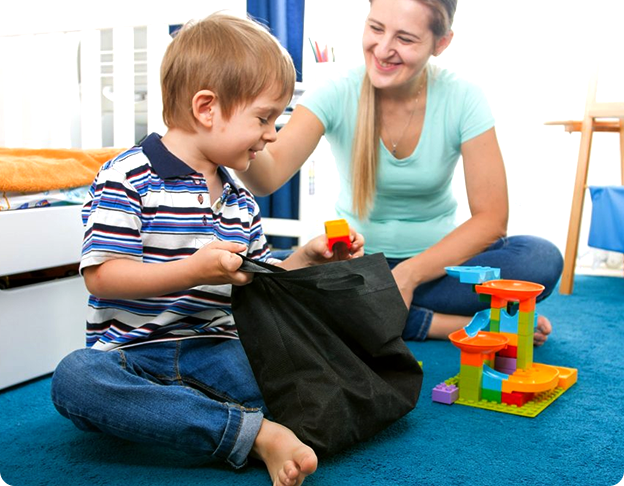Perhaps you remember that when you were a child, you felt a great sense of pride when your parents voiced their enthusiastic approval of your newfound mastery of a skill or success at independent learning. However, autism spectrum disorder (ASD) can make learning challenging, and children with ASD may not be impressed by the approval of parents, teachers, or other caregivers.
They may shrug off praise, appear equally unresponsive to approval and disapproval, or simply refuse to engage in learning activities. Part of ABA therapy is the concept of using motivational techniques to encourage children to learn.
Why Are Motivational Techniques Important in ABA Therapy?
Children with ASD they often lack the skills needed for coping and social interactions. At least part of the time, the child will demonstrate little motivation to develop essential skills or to learn anything that is not intricately tied to an interest.
Whether children are or are not on the autism spectrum, learning is closely tied to motivation. Simply stated, children learn faster when they are motivated. However, children can quickly tire of a motivator. Therefore, caregivers need a repertoire of motivational techniques on hand to ensure that they can match the right motivator to the immediate situation.
Normally, when a child strongly desires something is an ideal time to deploy a motivator to help the child learn. Identifying the specific snack or toy that the child wants is a critical part of the technique, and this requires a knowledge of the child to understand how to interpret facial expressions, body language, and other physical reactions.
It is also useful for caregivers to understand the child’s learning history, the environmental factors that affect his or her ability to focus, and the child’s perspective of whether a learning task serves a meaningful purpose.
Nine Motivational Techniques to Use
Children should receive a small reward each time they respond appropriately, but the rewards must be sufficiently interesting to each individual child to provide motivation. Always accentuate the positive and be liberal with your praise.
- Make learning fun. Children can gain a sense of accomplishment from play therapy. Involve yourself in activities or games that the child typically does alone. For example, suppose that a child normally plays a board game by herself. If you can show her that it is more fun to play with you than to play alone, she may be more inclined to interact with you in other areas.
- Encourage the child to interact with you. Brief pauses before giving the child what he or she wants can encourage vocalizations, eye contact, and pointing. One idea for encouraging interaction is to relocate some of the child’s favorite items to a place where they can be seen, but the child cannot reach them. Interacting with you will be the only way that the child will have access to a favorite item, and this can motivate the child.
- Avoid boring the child. Do not be afraid to introduce new things. For example, just because a child has never seen or played with a stuffed giraffe does not mean that it cannot quickly become a favorite. Rotate your inventory of toys and games so that there is always something new to explore.
- Allow the child to choose the activity. Many children are more motivated to cooperate when they have the freedom to decide for themselves on a game or activity. For example, you could offer the child a selection of games, a collection of crafting supplies, or an assortment of stuffed animals, or you could offer one item from each category.
- Embrace music therapy. Repetitive, simple phrases often help children develop their language skills and alter their monotone pattern of speech. Making it a group activity can also encourage social interactions. As an example, you could sing the first line of a simple song, then ask the child to repeat your words and cadence. If more than one child is present, you could instruct the children that they are to repeat the line one at a time when you point at them.
- Give children something worthwhile to strive for by making a reward a favorite snack or toy. For example, if you know that a child adores playing with toy dinosaurs, let it be known that the reward for each accomplishment that day will be to choose a different dinosaur for a few minutes of play time.
- Integrate sensory stimulation. For many children, sensory stimulation can be overwhelming. Integrating sensory stimulation with other activities can help them learn to adjust. For example, children who are overwhelmed by loud noises might be introduced to a singalong that punctuates the end of each line with an air horn.
- Order the sequence of motivating events so that preferred or familiar experiences follow those that are less preferred or less familiar. Keep the first activities shorter than the ones that follow. For example, students with a limited range of interests could be encouraged to explore a different activity so that they may move on to an activity that they enjoy.
- Plan for outcomes that can be immediately achieved. Do not push for perfection; instead, give positive reinforcement whenever a child attempts a goal-directed task. Your goal is to create a situation in which the child can perform the task correctly the first time. For example, you could model the task so that the child can see exactly how it is to be performed.
Every child is unique, but children tend to be especially affected by failure, ridicule, and sarcasm. Negativity can have a detrimental impact on the child’s motivation, so always keep things positive.




